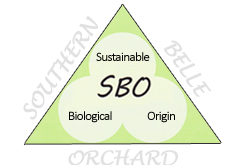Kiwifruit
The kiwifruit is a prime example of how appearances can be deceiving. This small fruit with its fuzzy-brown skin is quite unassuming, but when cut open reveals a brilliant, bright green flesh. When sliced cross-wise, the pattern of the black, edible seeds and bright white center, together with the emerald green of the kiwi is quite spectacular. It is not unlike cracking open a dull, unsightly geode to reveal the sparkling crystals inside.
Taste
Kiwifruit has a juicy, firm texture with an added crunchiness from the edible seeds. The flavour has been compared to a combination of peaches, berries and melon, with a slightly tart kick. They are best eaten when soft and ripe, when the flavours are sweet and full. Unripe kiwifruit is unpleasant and bitter.
Nutrition Information
With more vitamin C than citrus, kiwifruit packs a good antioxidant punch. It is also a good source of fiber, vitamin E and potassium. The fruit also contains an enzyme called Actinidin, which works quite well as a natural meat tenderizer.
How to Eat
The most popular way to eat kiwifruit is to slice off the ends and gently peel off the skin. Then slice them crosswise to take advantage of their eye-catching beauty. They add a nice pop in both taste and appearance to fruit salads. Or they can be added to ice cream or yogurt or made into smoothies. Some people even eat the skin, but make sure you wash them and remove the fuzzy coating first.
Storage
Kiwifruit are quite delicate, especially when ripe, so handle them carefully. You can speed up the ripening process by storing them in a paper bag with an apple or banana. But once ripe, eat them quickly, or refrigerate, as they can become overripe rather quickly. They will last for another week or two in the refrigerator.










